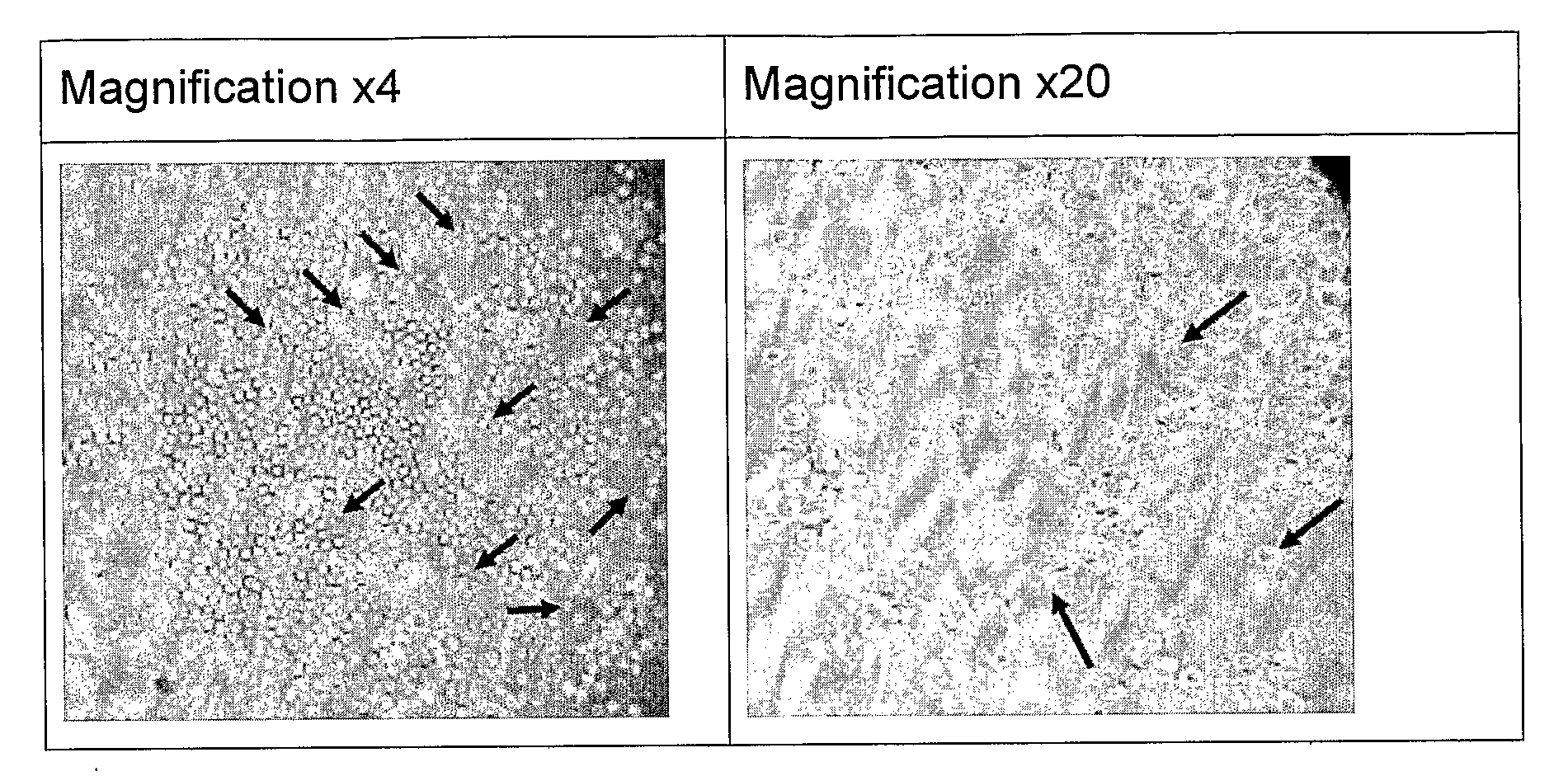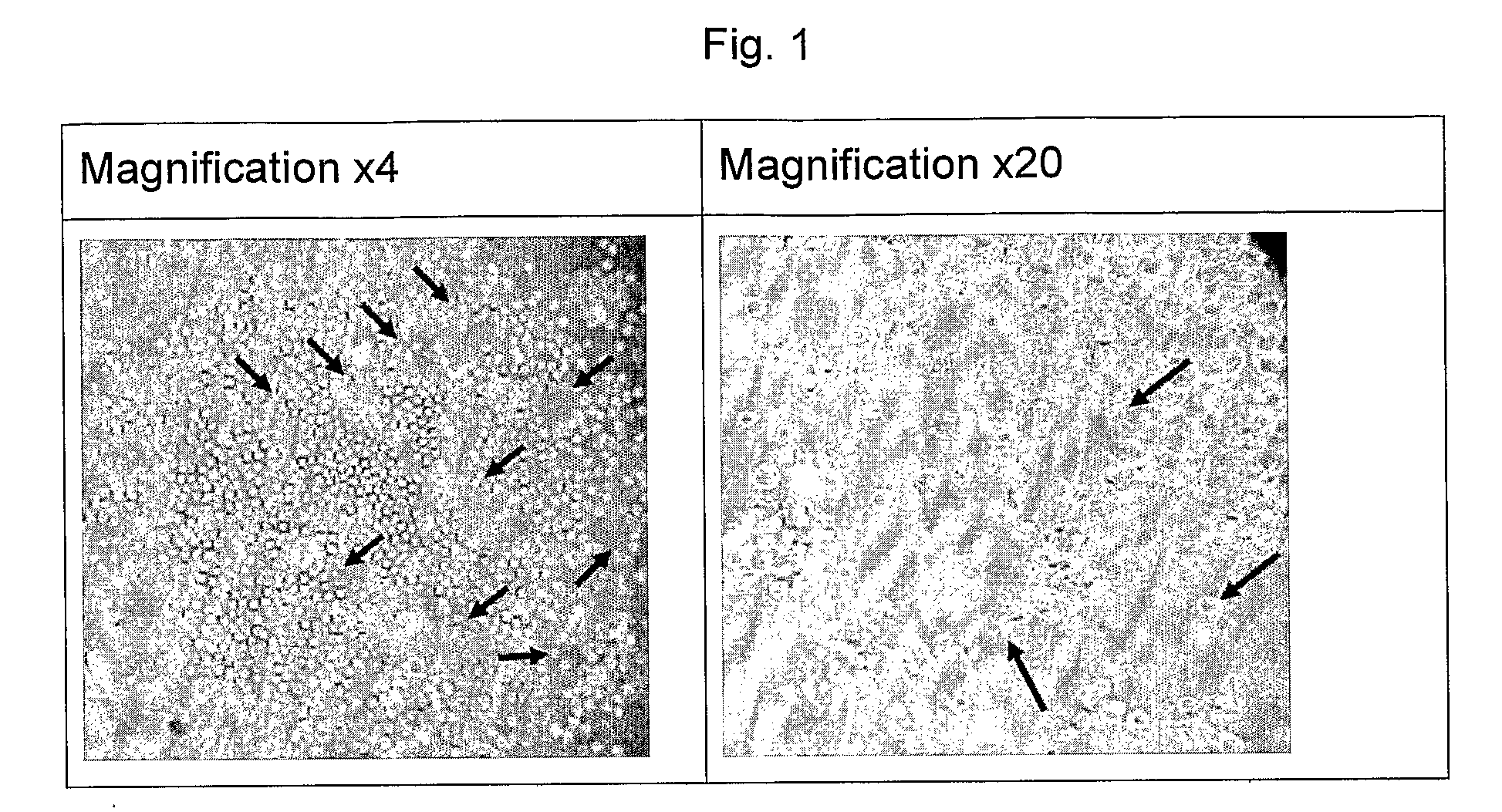In Vitro Techniques For Use With Stem Cells
a technology of stem cells and in vitro culture, which is applied in the field of human patients suffering from vascular disorders, can solve the problems of affecting the quality of life of patients, and preventing the supply of sufficient nutrients and oxygen to tissues and organs, so as to improve vasculogenesis and/or angiogenesis and/or neovascularization. , the effect of enhancing vasculogenesis
- Summary
- Abstract
- Description
- Claims
- Application Information
AI Technical Summary
Benefits of technology
Problems solved by technology
Method used
Image
Examples
example 1
[0702]In a set of separate experiments, the ability of first-pass enriched EPCs to generate tubes was evaluated using a tube-formation test following in-vitro growth on Fibronectin-coated T-75 Flasks in the presence of medium containing high serum levels (>10% autologous serum or non-autologous serum), 1, 2, 10 or 20 ng / ml VEGF, and 5-25 TU / ml Heparin. Typical tube formation images are presented in FIG. 1. In these experiments conducted with human blood, using the protocol described hereinabove, images were taken using an inverted microscope (Nikon ECLIPSE TS100) using amplifications of ×4 and ×20.
[0703]FIG. 1 shows tube formation test from first-pass EPCs enrichment in culture.
example 2
[0704]In a set of separate experiments, enrichment of EPCs from second-pass cells was evaluated following in-vitro growth on Fibronectin-coated T-75 Flasks in the presence of medium containing autologous serum, VEGF, b-FGF, IGF, and Heparin. Flow-cytometry percentage staining results from twenty independent experiments are summarized in the Table for example 2. In these experiments conducted with human blood, using the protocol described hereinabove, FACS staining results of cells cultured in media containing high serum levels (>10%) and 1, 2, 10, or 20 ng / ml VEGF yielded the following changes in staining levels from day 0 to day 13:
Table for example 2 Enrichment of Second-Pass EPCsfollowing thirteen days of culture% Stained cells on% Stained cellsMarkerday 0on day 13CD4585%-98%7.0%-39.0%CD34Undetectable (up to 17.7%CD133Undetectable (up to 6.5%KDRUndetectable (up to 7.3%
example 3
[0705]In a set of separate experiments, enrichment of EPCs from first-pass cells was evaluated following in-vitro growth on Fibronectin-coated T-75 Flasks in the presence of medium containing autologous serum, VEGF, and Heparin. Flow-cytometry percentage staining results from independent experiments are summarized in the Table for example 3. These experiments were conducted with human blood, using the protocol described hereinabove. Before incubation the cells exhibited less than 1% CD34. FACS staining results of cells cultured in media containing 5-20% autologous serum (typically 10%); 1, 2, 10, or 20 ng / ml VEGF and 5-25 IU / ml Heparin are summarized. The following surface markers were analyzed: CD45 (a pan-lymphocyte marker), the stem / progenitor cell markers CD34 and CD117, and the EPC / endothelial cell markers CD133, KDR (VEGF-R), CD144, and Dil-Ac-LDL.
Table for example 3. Characterization of first-pass EPCs Cultured onFibronectin pre-coated flasks in the presence of VEGFMarkerAver...
PUM
| Property | Measurement | Unit |
|---|---|---|
| density | aaaaa | aaaaa |
| density | aaaaa | aaaaa |
| density | aaaaa | aaaaa |
Abstract
Description
Claims
Application Information
 Login to View More
Login to View More - R&D
- Intellectual Property
- Life Sciences
- Materials
- Tech Scout
- Unparalleled Data Quality
- Higher Quality Content
- 60% Fewer Hallucinations
Browse by: Latest US Patents, China's latest patents, Technical Efficacy Thesaurus, Application Domain, Technology Topic, Popular Technical Reports.
© 2025 PatSnap. All rights reserved.Legal|Privacy policy|Modern Slavery Act Transparency Statement|Sitemap|About US| Contact US: help@patsnap.com


